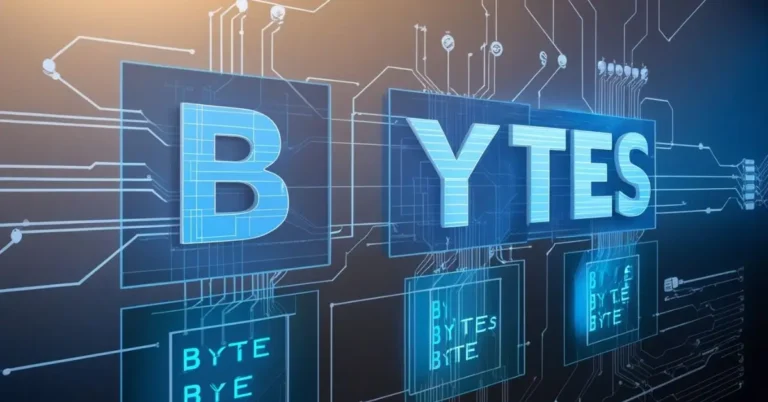In the world of computing, the concept of a byte is central to how digital information is stored, processed, and transmitted. This guide will provide an overview of bytes, including their definition, historical context, role in data storage and processing, and practical applications. By the end of this article, you will have a clear understanding of what bytes are and why they are important.
What is a Byte?
A byte is a unit of digital information that consists of 8 bits. Here’s a breakdown:
- Bit: The smallest unit of data in computing, represented as a 0 or a 1. Bits are the foundation of all digital data.
- Byte: A group of 8 bits. This configuration allows a byte to represent 256 different values (from 0 to 255). For example, it can encode a single character in a text file or store a numerical value.
Historical Context and Evolution
The concept of a byte has evolved over time:
- Early Systems: Early computers used various byte sizes, such as 6-bit or 9-bit bytes. The 8-bit byte became standard due to its efficiency and compatibility with encoding systems like ASCII (American Standard Code for Information Interchange).
- Standardization: The 8-bit byte became widely adopted because it could represent a broad range of characters and symbols, making it the standard in modern computing.
The Role of Bytes in Data Storage
Bytes are fundamental in data storage:
- Storage Capacity: Storage devices are measured in bytes. For instance, a hard drive with a capacity of 1 terabyte (TB) can hold approximately 1 trillion bytes of data. Understanding bytes helps in assessing how much data can be stored.
- File Size: Files are sized in bytes, kilobytes (KB), megabytes (MB), gigabytes (GB), and terabytes (TB). For example, a text document might be a few kilobytes, while a high-resolution image could be several megabytes.
Bytes in Memory and Processing
Bytes play a crucial role in memory and data processing:
- RAM (Random Access Memory): RAM is measured in bytes and is used for temporary storage of data that the CPU needs to access quickly. Knowing bytes helps in evaluating memory performance and capacity.
- CPU Operations: The Central Processing Unit (CPU) performs operations on bytes. For example, when running a program, the CPU processes data and instructions organized in bytes.
Data Representation and Encoding
Bytes are used to represent various types of data:
- Text Encoding: Bytes encode characters using schemes like ASCII or UTF-8. Each character is represented by one or more bytes, depending on the encoding.
- Images and Multimedia: Images and audio files are composed of bytes. For example, a JPEG image or an MP3 audio file uses bytes to encode visual or sound data.
Networking and Data Transmission
Bytes are essential in networking and data transmission:
- Packet Size: Data sent over networks is divided into packets, each containing a specific number of bytes. Understanding bytes helps in optimizing network performance and troubleshooting issues.
- Bandwidth and Speed: Network speed and bandwidth are measured in bytes per second (Bps). For example, a download speed of 1 megabyte per second (MBps) indicates the transfer rate of 1 million bytes per second.
Practical Examples and Applications
To make bytes more relatable, here are some examples:
- Text Documents: A text file with 1,000 characters is typically about 1 kilobyte (KB) in size, as each character usually requires one byte.
- Images: A high-resolution image might be 2 megabytes (MB) in size, depending on its format and compression. Each pixel in the image requires multiple bytes.
- Software: Software programs and applications are measured in megabytes or gigabytes. For example, a video game might require 50 gigabytes (GB) of storage.
Advanced Concepts and Future Trends
Bytes continue to evolve with technological advancements:
- Large Data Volumes: Concepts like petabytes (PB) and exabytes (EB) are becoming more relevant as data volumes grow.
- Quantum Computing: The traditional byte may evolve with quantum computing, which uses different methods of data representation.
- Data Compression: Techniques to reduce the number of bytes required for storage or transmission are continually advancing, optimizing efficiency.
Conclusion
Understanding bytes is crucial for navigating the world of computing and digital technology. From data storage and memory to networking and multimedia, bytes are the basic units of digital information. By understanding bytes, you gain insight into how data is managed and processed, which is fundamental for grasping modern technology.

